This example of Central African polyphonic tradition is of keen interest to many microtonalists. To facilitate the study of the piece presented in the video I used Celemony Melodyne 4 Studio to analysis select time slices. Melodyne provides an analysis in cents of the selected notes (the darkened area) and applies this analysis to the left hand part of the display.
Opening Chord – after a brief monophonic introduction a chord is played twice to announce the beginning of the piece – click on the image to expand.
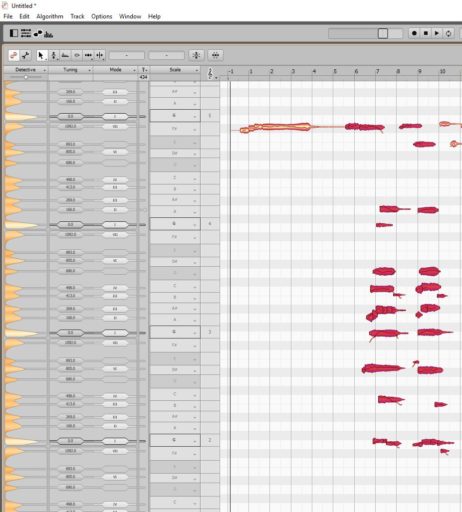
Next a series of interlocking melodies start to cascade from the introductory note. For a brief period only 5 pitches are sounded. Note the drift in some pitches but not others. It is unknown if this is intentional.
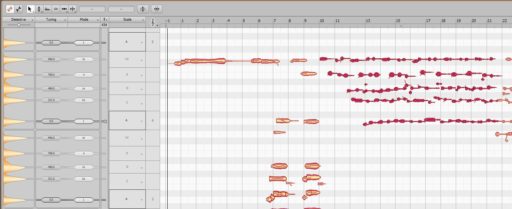
Now the melodic lines continue building towards the bass registers. If appears that some of the highest notes drop out and reappear in a rhythmic pattern.
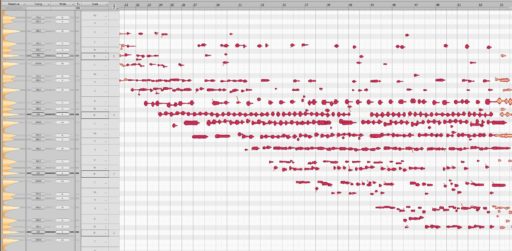
The composition is a complex rhythmic as well as a harmonic and melodic creation. This time slice is just past the half way point. The change noted here is length and volume emphasis of notes in the high mid-register.
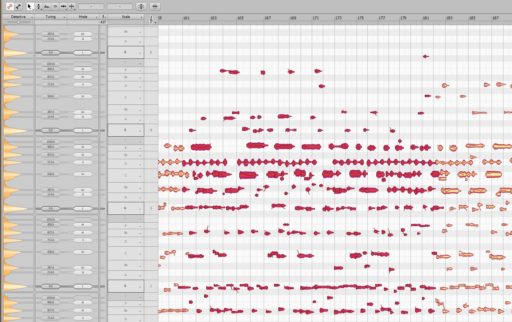
Then the shorter note section returns. There is some alternation between the two. Also notice that there are some tuning variation in the sections as well.
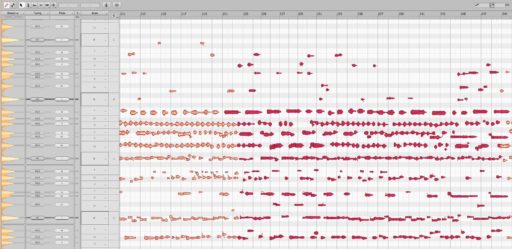
Here towards the coda there seems to be a less evident but intentional “rolling up” of the melodic / harmonic content from the bass registers to the highest.
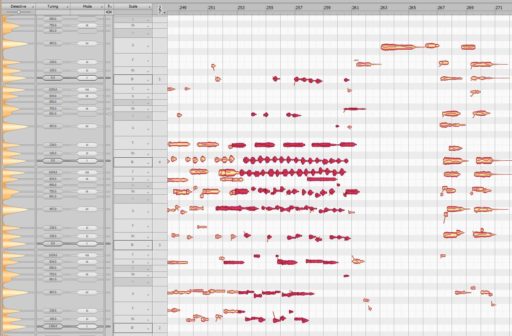
The coda consists of a recapitulation of the opening with a similar solo melodic line heralding the closing repeated chords.
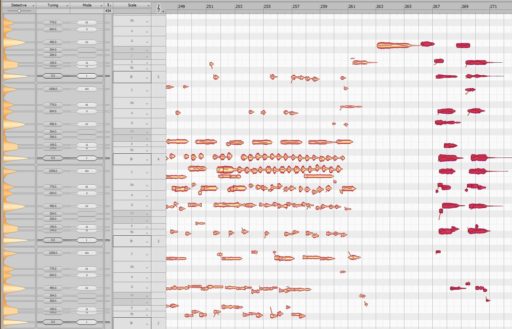
Leave a Reply